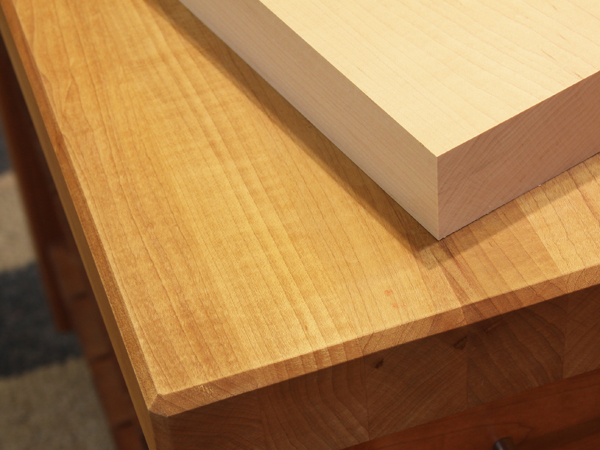
Against all advice, the client is insisting on a maple cutting-board style countertop for an island. (But then when could anyone tell his firstborn anything?) The countertop will be about 1-1/2 in.-thick maple and I’m planning on traditional breadboard ends of cherry. The finish is to be walnut oil as it sort of cures and is food-safe. The concern is, what do I put on the bottom side of the countertop? It will not be accessible after installation. I’ve always been told that what is done to the outside needs to be done to the inside. – Rich Flynn
Chris Marshall: Rich, I’m presuming you’re raising this question out of concern that the countertop might eventually warp — the common knowledge being, if it’s finished differently on its faces, they will absorb and release moisture at different rates, thus leading to deflection of one sort or another. I’m actually skeptical of this logic. There’s plenty of antique furniture that has stood the test of time with finish applied only to the outer surfaces but having bare wood inside. And the issue seems even less of a big concern with today’s living spaces that are carefully temperature- and humidity-controlled. That said, a coat of finish on the bottom face certainly can’t hurt!
If the maple for this project is kiln-dried and stable, and the countertop is secured properly to web frames underneath (allowing for some cross-grain movement if the slab is edge-glued from wider boards), I’d probably just finish the bottom face with oil-based poly and use walnut oil for the top “working” surfaces so it can be reapplied as needed. However, I’d advise your firstborn to take special care of this surface, particularly around the sink area and dishwasher — maple is not immune to water or steam damage, or food stains, in the same way that a synthetic, tile, granite or marble option would be. The wood needs to stay dry most of the time, and he/she needs to keep up with the oiling process on top. That’s why for as much as I love wood, I appreciate when these sorts of big investments (of time and money) in a kitchen are low maintenance and durable. For that reason, my pick for a kitchen countertop wouldn’t be wood — and I’m guessing this is the same line of reasoning you’ve been offering to the homeowner, too. (But hey, what do woodworking fathers know anyway?!)






